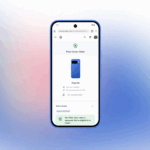![]()
A number of complaints have surfaced concerning the Google Pixel 6 and Pixel 6 Pro smartphones since their launch last month. One of these allegations that the tech giant has chosen to respond to is that the Pixel 6 and Pixel 6 Pro don’t charge as fast as some have expected. Google has confirmed that their slow charging speeds are a deliberate tradeoff for better battery life. According to a report by Android Authority, it was revealed that the phones’ maximum power draw was at about 22W, a figure well short of the 30W that Google’s latest USB-C charging brick is capable of.
According to Google’s spoke via a community support post, it was confirmed that the maximum power draw of the Google Pixel 6 and Pixel 6 Pro are 21W and 23W respectively when used with its 30W USB-C charging brick. They added that charging speeds also decrease as the phones’ batteries fill up to preserve their longevity.
In the post, Google notes that the power draw figures are the inevitable results of battery tradeoffs. The statement reads that “A battery can be designed for high energy density, or for fast charging power capability, which requires trading off capacity to minimize battery degradation.” What this technically translates to is that a phone offers long battery life or fast charging, but can’t simply do both at the same time. So Google on behalf of her users and customers prioritized a longer battery life and designed the power draw of these smartphones to a more modest amount of power while charging. We have come across various smartphones from competing brands and tech companies and this isn’t a factor for consideration.
According to a review of the two phones by The Verge, discoveries revealed is that “Even if you do use a powerful enough charger, neither phone charges particularly quickly. Google aggressively slows down charging once it’s past 80 percent to preserve the battery cells’ longevity, and since these batteries are so large, getting to a full charge can take a long time. Fortunately, thanks to the long battery life, you will likely only have to charge when you’re sleeping anyway.”
Although Google’s support documents never explicitly explained the charging speeds of the new phones or their technical compatibility with Google’s 30W charging brick which is sold separately. The figures were taken by many to mean that their real-world maximum charging speeds would approach the 30W level, and would be far faster than the 18W charging supported by the Pixel 5. According to Android Authority’s report, it is revealed that the actual power draw of both phones peaks at about 22W and averages around 13W over the course of a full cycle.
The effect of this shows that the phones charge far slower one might expect. Android Authority’s finding reveals that it took the Pixel 6 almost two hours to reach a full charge. That’s 49 minutes slower in comparison with Samsung’s Galaxy S21 Ultra, which has a battery that is quite similar-sized but is only advertised with 25W fast charging speeds. In fact, Google’s power draw is reported to be so conservative that its 30W charger only fully charges a Pixel 6 Pro 10 minutes faster than its old 18W charger.
Google hasn’t claimed that the phones charge at 30W. Instead, the advertisement showcases the number of times smartphones take to get from 0 to 50 and 80 percent when using its 30W charger — 30 minutes and around an hour, respectively.
Google also recently cleared the air on the seemingly sluggish performance of the phones’ fingerprint scanner is as a result of the Pixel’s “enhanced security algorithms.” Although an update has been released containing improvements on the performance sensor improvements,” although the improvements Google claims it delivered is still received with mixed feelings. As at the point of writing this article, the performance status for the updated sensor by Google seems to be just slightly good enough.
Discover more from TechBooky
Subscribe to get the latest posts sent to your email.







